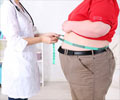The annual snapshot of the nation's health, put together by the National Center for Health Statistics, also shows that nearly a third of Americans are obese and two-thirds overweight. But life expectancy at birth continues to rise, reaching a new record high of 77.2 years in 2001, up nearly 2 years since 1990. Girls born in the United States in 2001 can expect to live 79.8 years, an increase of one year from 1990. The life expectancy for boys born in 2001 was 74.4 years, up two years since 1990. "This tells the whole story, that while we are living longer and we are healthier, that there are many things that are not going in the right direction," say researchers . One bad development is the rise in type-II or adult-onset diabetes, which can be prevented with proper diet and exercise.
The report finds that 6.5 percent of American adults were diagnosed with diabetes in 2002 compared with 5.1 percent in 1997. Another recent study shows that about 12 million adults have been diagnosed with diabetes and an additional 5 million adults have it but do not know it. Another 12 million adults have impaired fasting glucose tolerance -- meaning they will develop diabetes if they do not do something right away. That means losing weight, exercising and eating better."We are at the cusp of a problem that can even get much worse," say researchers. The development affects not only patients themselves, but the health care system. Diabetes is the fifth leading cause of death among women and sixth among men. The condition is associated with heart disease, chronic kidney disease, blindness, and amputations. Almost one in five hospitalizations in people over 45 has a diagnosis of diabetes associated with it.
One reason for the epidemics of both obesity and diabetes is clear - people do not exercise nearly enough.
The report finds that 28 percent of women 18 and older and nearly 22 percent of men say they get little or no exercise at home, work or in their leisure time.
Just 21 percent of men and 17 percent of women get "high" levels of activity -- meaning they are active at work and get in the equivalent of five brisk, 30-minute walks a week or three intense sessions of exercise a week in their leisure time.











